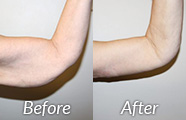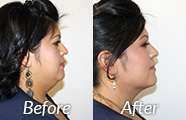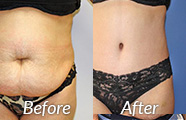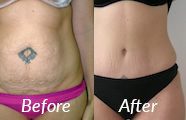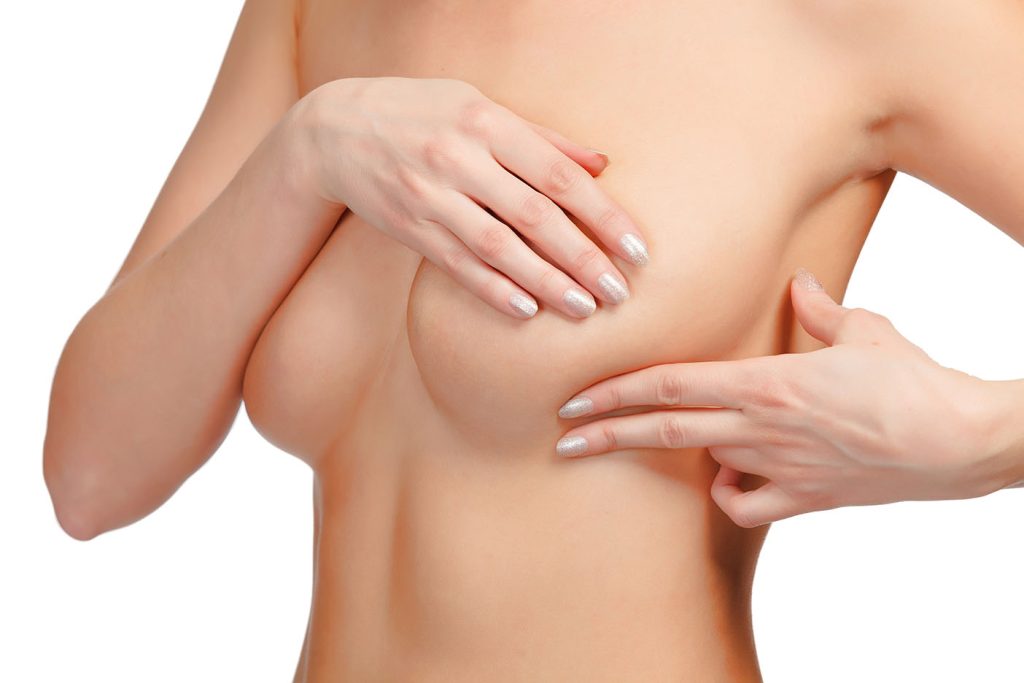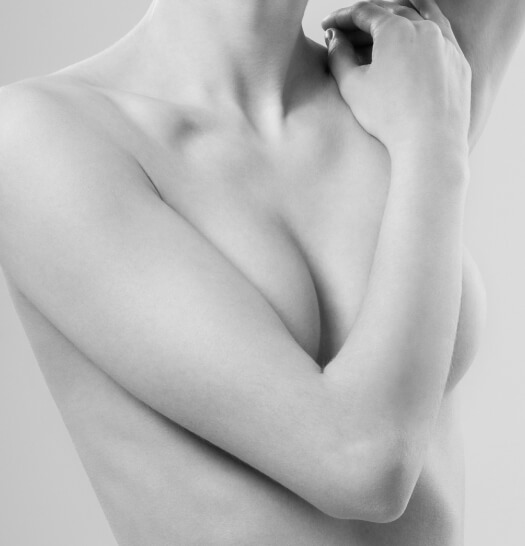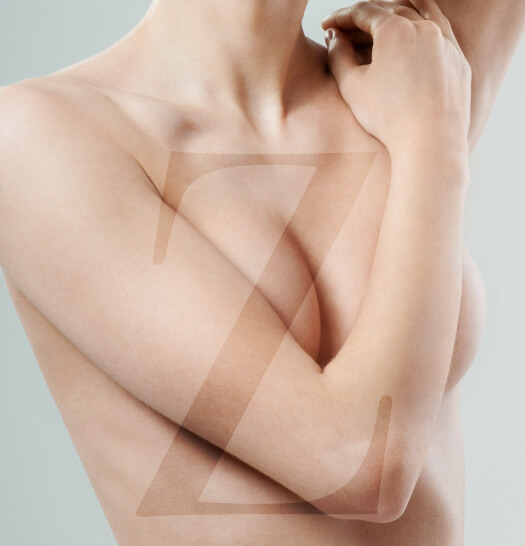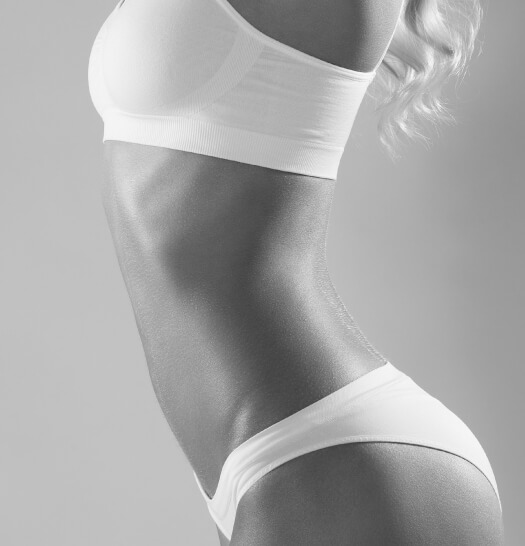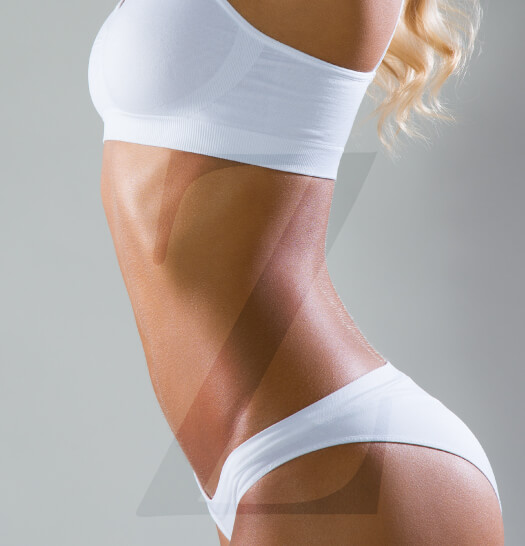Capsular Contracture
Conveniently located to serve the areas of Santa Monica, Beverly Hills and Greater Los Angeles
Capsular contracture is a complication that can occur after breast augmentation surgery. It is a condition where scar tissue forms around the breast implant, causing it to harden and become misshapen. This can result in discomfort, pain, and changes in the appearance of the breasts. Although it isn’t usually a health risk, it may require a revision surgery in order to correct the aesthetic issues.
At Zarrabi Plastic Surgery, we understand the frustration and concerns that come with capsular contracture. With the help of Dr. Michael Zarrabi, a board-certified plastic surgeon and specialist in breast reconstruction, you can restore the natural look and feel of your breasts. This may include options such as implant removal,replacement, or a complete breast revision with a lift. With his expertise and meticulous surgical techniques, Dr. Zarrabi will achieve optimal results while ensuring your safety and satisfaction. Call his offices in Santa Monica and Beverly Hills at (310) 584-9990, get in touch with us via our contact form today, or schedule a virtual consultation today.
Contents
About Capsular Contracture
Whenever a surgeon performs a breast augmentation, it is expected that the body will have a normal response to the implants and form a fibrous capsule around them. The breast reacts to the augmentation by sending glycoproteins from plasma within the blood to surround the implant. Cells called fibroblasts also accumulate and begin to produce collagen which makes up the capsule itself. When the breasts adapt normally to the implants, the capsule provides support for the implants. During this process, immune cells called macrophages are also present to fight bacteria. (1)
Capsular contracture occurs when too much collagen disrupts the breast as a whole, leading to unwanted contraction, pain, and hardening. While some cases call for surgical intervention, there are some that may not require surgery if recognized early in recovery.
Risk factors Capsular Contracture
Dr. Zarrabi takes multiple factors into consideration when determining the best methods of preventing capsular contracture. Research has found that infection, the presence of biofilm (a collection of bacteria that adheres to the surface of the implant), prior radiation therapy, a history of fibrosis, and certain types of implants may contribute to the occurrence of capsular contracture. (2) While some of these can be mitigated with surgical expertise, the choice of breast implant is mostly the patient’s decision. The implant’s location, whether it is placed under or over the pectoralis muscle (chest muscle) also plays a role.
Recent studies have demonstrated that patients with implants placed over the pectoralis are at an increased risk. Those with smooth implants and silicone-filled implants may also have a higher risk of developing capsular contracture. (3)
Capsular Contracture Classification System
The severity of capsular contracture is classified using the Baker system. Classes I and II aren’t significant- Class I signifies that the breast looks and feels natural. With Class II, a doctor would be able to tell that a surgery has been done, but the patient has no discomfort. Class III contracture is characterized by moderate firmness and some distortion, while Class IV cases exhibit severe distortion that can be easily observed by just looking at the breast. Dr. Zarrabi recommends surgery for patients who have Class III and IV capsular contracture.
Personal Consultation
During your consultation, Dr. Zarrabi will begin by reviewing your medical history and conducting a comprehensive examination of your breasts. This examination will help him assess the extent and severity of the capsular contracture and determine the best course of action for your unique circumstances. Factors such as the type of breast implants you have, the degree of scar tissue formation, and any associated symptoms you may be experiencing will all be taken into consideration.
With a quick request for a consultation online or by calling (310) 584-9990 for his Beverly Hills or Santa Monica, CA location, you can begin your journey toward restoring body-image confidence and recovery from capsular contracture.
Procedure Options
Breast Implant Removal and Replacement
Women who appreciate the look, feel and symmetry of their breast implants can opt for replacement implants. In order to avoid another problem with capsular contracture, Dr. Zarrabi can help you make an informed decision on your next pair. In order to best prepare the tissue for another pair, he will perform an en bloc capsulectomy. With this part of the procedure, Dr. Zarrabi will remove the fibrous capsule and the implant in one piece to avoid complications.
During your recovery, you may experience some soreness and swelling, but you will be able to go back to work within 1 week. Though, you will have to wear a surgical bra for at least 6 weeks and avoid strenuous activity for that amount of time or longer, depending on the rate of your healing. Roughly 3 to 6 months into your recovery period, you will notice your replacement implants “drop” into a more natural position.
Breast Implant Removal with Lift
For women who have had repeated instances of capsular contracture or have simply outgrown the desire for implants, an implant removal with a breast lift is a viable option. After your implants are removed using an en bloc capsulectomy, Dr. Zarrabi will make one of these three methods: the donut mastopexy, vertical technique, or the anchor technique. While a donut mastopexy is most ideal for women with minimal sagging, the vertical and anchor techniques are better equipped to correct severe sagging for moderate-to-large breasts. Donut incisions are made closely around the areola, allowing the areola’s darker color to conceal the line. Vertical techniques include a donut incision plus a vertical incision towards the crease of the breast, while the anchor technique utilizes these incisions plus one that horizontally follows the bottom crease of the breast.
Just like breast implant replacement, this procedure only requires 1 week of downtime and 6 weeks of avoiding strenuous exercise. Most patients notice that most of their swelling is gone by 3 months, but it will completely subside within 6 months. The scars are likely to completely fade within 1 to 2 years, but this process can be sped up by applying scar cream and/or silicone gel once they have healed enough.
Preparation
When you choose to undergo a capsular contracture correction procedure at Zarrabi Plastic Surgery, we want to ensure that you are fully prepared for your surgery. Our comprehensive approach to preparation includes several important steps to optimize your results and promote a smooth recovery.
Firstly, you should discontinue all anti-inflammatory and blood-thinning medications to ensure there is no unwanted bleeding. If you are a smoker, you will have to stop all nicotine products about 4 to 6 weeks prior so that your blood circulation and healing processes are working at their best. You also should pick up any prescriptions and over-the-counter medications. Finally, you should make plans with a friend or family member to pick you up on the day of your surgery.
Cost of Capsular Contracture Correction in Santa Monica
At Zarrabi Plastic Surgery, we believe in providing our patients with not only exceptional care but also complete transparency when it comes to pricing. During your consultation, Dr. Zarrabi will evaluate your individual case, discuss your goals and expectations, and develop a customized treatment plan tailored to your needs. This will allow him to provide you with an accurate estimate of the cost associated with your specific procedure.
To book a consultation to discuss capsular contracture treatment further, call (310) 584-9990 or complete an inquiry form to reach our scheduling staff.
FAQ
Can capsular contracture be prevented?
While it is impossible to guarantee complete prevention of capsular contracture, there are steps that can be taken to minimize the risk. These include proper sterile technique during surgery, the use of antibiotic prophylaxis, meticulous surgical dissection, careful implant selection, and placement, as well as following post-operative instructions meticulously. Additionally, regular follow-up visits with your plastic surgeon will allow for early detection and prompt treatment of any potential complications.
Is capsular contracture common?
While advancements in implant technology and surgical techniques have significantly reduced the occurrence of capsular contracture, it can still occur in a small percentage of patients. The overall incidence rate is estimated to be around 5 to 10%.
Are there any non-surgical alternatives to treat capsular contracture?
While surgical intervention is often necessary to effectively treat capsular contracture, there are non-surgical alternatives that may provide temporary relief or improve the condition. These include massage, ultrasound therapy, prescription medications, and the use of certain supplements. However, it is important to note that these non-surgical interventions have limited effectiveness and may not provide long-term resolution.
When does capsular contracture occur?
Capsular contracture can begin to develop just a few months after your breast augmentation, but it may also begin years later due to a silicone rupture.
Can the same breast implants be inserted after a capsular contracture correction surgery?
No. Oftentimes, the implants’ biofilm, or buildup of bacteria on the surface of the implant, can interact negatively with the body and cause another capsular contracture or infection.
References
- Bayston R. Capsule formation around breast implants. JPRAS Open. 2021;31(1). doi:https://doi.org/10.1016/j.jpra.2021.11.004
- Luvsannyam E, Patel D, Hassan Z, Nukala S, Somagutta MR, Hamid P. Overview of Risk Factors and Prevention of Capsular Contracture Following Implant-Based Breast Reconstruction and Cosmetic Surgery: A Systematic Review. Cureus. 2020;12(9). doi:https://doi.org/10.7759/cureus.10341
- Headon H, Kasem A, Mokbel K. Capsular Contracture after Breast Augmentation: An Update for Clinical Practice. Archives of Plastic Surgery. 2015;42(5):532. doi:https://doi.org/10.5999/aps.2015.42.5.532


